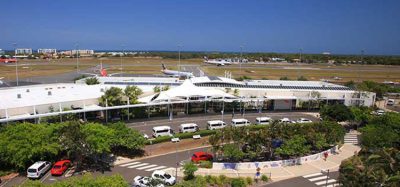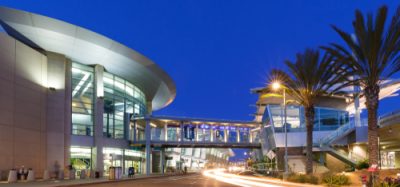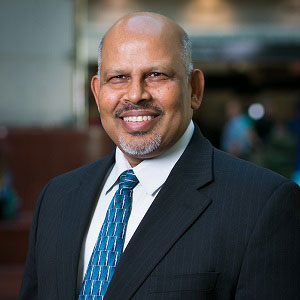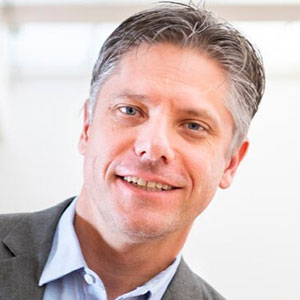Zurich Airport’s long-term approach to sustainability: energy transition, breakthrough fuels and electrification
Posted: 15 September 2025 | Holly Miles | No comments yet
With over three decades at Zurich Airport, Emanuel Fleuti has witnessed the evolution of sustainability from a fringe concern to a core strategic pillar. As the airport’s long-serving environmental lead, he brings continuity, context and conviction to Zurich’s decarbonisation journey. He shares more with Holly Miles.


Zurich Airport’s (ZRH) environmental strategy centres on eliminating unnecessary combustion processes across the airfield. “We have fixed ground power and pre-conditioned air for aircraft, and we have battery-powered GSE and vehicles to reduce the combustion emissions,” says Emanuel.
One of Zurich’s boldest moves, however, dates back to the mid 1990s, when it introduced an emission-related landing fee. “Aircraft that did not have the latest engine technology had to pay more on a surcharge,” he explains. “That motivated not just the airlines, but also the engine manufacturers to redesign engines and come up with cleaner technologies.”
This was a progressive move back then, as the idea of polluter-pays pricing was not widespread in aviation at the time.
“That was probably the most important initiative we took in addition to mandating the use of our PCA and 400 hertz systems that we have, which meant in return, a restriction on the use of auxiliary power units. “
While in the beginning around 50% of airlines were paying an additional surcharge, now most aircraft meet modern standards, however the principle remains. “Even the most modern aircraft still emit, so they still have to pay a little bit.”
Driving the energy transition
Zurich has committed to a master plan for energy and infrastructure decarbonisation, focusing on both consumption and production. “First, we reduce energy use on the consumer side with appliances, infrastructure, heating and cooling demand. Then we improve production with renewable energy,” says Emanuel. “We’re switching to geothermal ground heat with heat pumps and photovoltaic plants to produce electricity.”
As of 2025, the airport is purchasing 100% renewable electricity. On the heat side, around 20% is currently sourced from renewables, with plans for continued expansion.
Crucially, Emanuel says the economics make sense. “The upfront initial costs are going into changing fossil energy production to geothermal or heat pumps. But over time, we’ll save energy on the operational side.”
Backing breakthrough fuels
With long-haul aircraft dominating Zurich’s traffic profile, Emanuel is realistic about the limitations of electrification and hydrogen at his airport. Instead, Zurich Airport is taking a pioneering role in backing breakthrough technologies such as solar fuels.
“We think that sustainable aviation fuels will be key for the airport’s decarbonisation. Long-haul aircraft can only fly with drop-in fuels such as SAF.”
“We are supporting the new solar-to-liquid technology. It’s a start-up company here in Switzerland,” he says. “In the new plant, Jet A1 aviation kerosene will be produced, but also diesel for trucks and petrol for cars. We’ve gone into an offtake agreement to take some of the diesel.”
Tackling scope 3 emissions
Zurich is taking a multi-pronged approach to Scope 3 emissions, from electrifying handling equipment to influencing staff travel habits.
“We are looking at ground handlers: how can we support them in their electrification process? How can we provide electric charging stations?” Emanuel says. On the staff side, Zurich offers public transport passes and encourages home working where feasible.
“Of course, not all jobs are suitable,” he acknowledges. “But if someone only commutes to work by car four days instead of five, that’s a 20% reduction.”
Electrifying the fleet
At the end of 2024, Zurich put its first electrically powered waste collection vehicle into operation. Zurich has a roadmap to reach net zero for its vehicle fleet by 2040. But it’s not always straightforward.
“We cannot accelerate this too fast because the technology has to evolve first. The main obstacle is the availability of the required vehicle types,” says Emanuel. “We’ve started with electric trucks, but snowploughs, for example, may need much longer endurance than what batteries can hold. So, we can only go as fast as suppliers can provide this technology, as it is not off-the-shelf. That’s why we’re also going into synthetic diesel to power those vehicles that cannot run on battery.”
Designing for the future
The airport is also preparing for the realities of climate change.
“Futureproofing for us is thinking ahead in longer terms, in 15 to 25 years,” says Emanuel. “It is about climate change, biodiversity and energy usage. Do we have enough sunlight? Yes, we do. Do we have enough technology to use it? No, we don’t. We need to bridge that gap.”
A pragmatic sustainability model
Zurich Airport offers a model of sustainability grounded in long-term thinking, pragmatism and measurable results. From early policy innovation to deep investment in future fuels, the airport is walking a careful line between operational reality and climate responsibility.


Emanuel Fleuti has been the Head of Sustainability & Environment of Zurich Airport since 1990. He is responsible for all environmental aspects, excluding aircraft noise, with expertise in sustainability, environmental management, air quality and climate change. He has been participating in several international programmes like ICAO’s Committee on Aviation Environmental Protection (CAEP) or the current European AVIATOR project. He has chaired the environmental committees of ACI EUROPE and ACI World and supports other airports and aviation organisations through consulting. Emanuel Fleuti has a MSc in Geography.
Join our free webinar: Beyond silos: How ecosystem thinking elevates the airport experience
In today’s complex aviation landscape, airports are moving beyond siloed operations to embrace a new era of collaboration. This webinar focuses on how leading airports are using ecosystem thinking to adapt, personalize, and continuously improve every touchpoint, boosting both passenger satisfaction and non-aeronautical revenue.
Date: 13 Nov | Time: 10:00 GMT
REGISTER NOW TO SECURE YOUR SPOT
Can’t attend live? No worries – register to receive the recording post-event.
Related topics
Airport development, Airport leadership, Airside operations, Emissions, Green energy, Hydrogen, New technologies, Social responsibility, Sustainability, Sustainable Aviation Fuel (SAF), Sustainable development


















